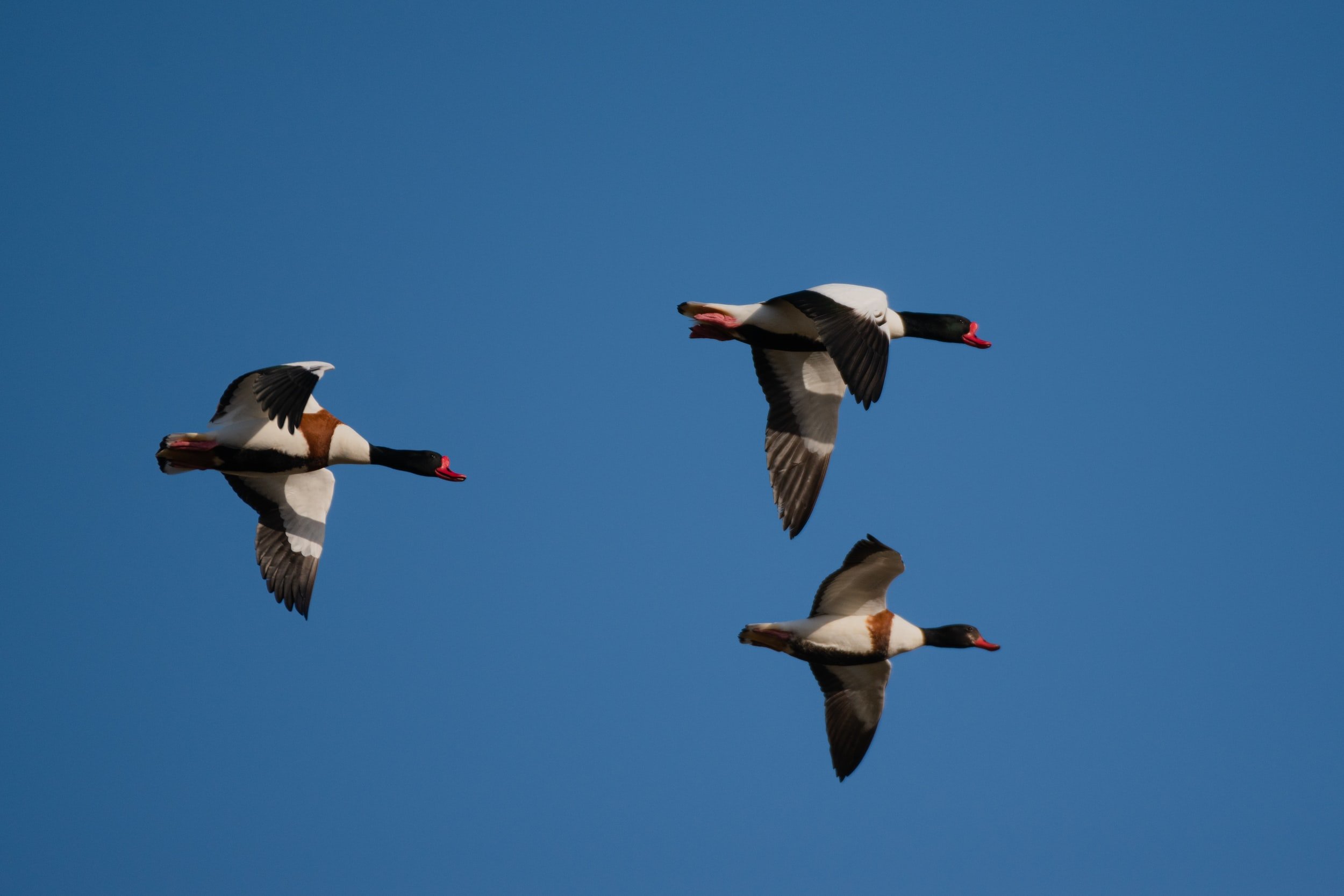Waterfowl in North America consist of ducks, geese and swans (Anitidae) that inhabit various fresh and salt water habitats across the continent. These are generally identified as “dabbling ducks,” “diving ducks,” “whistling ducks,” geese and swans.
Dabbling ducks are labeled for the way in which they feed by an inverted position on water plants in shallow waters. Dabbling ducks also feed on plant matter and certain insects out of water.
Diving ducks are those species that feed by diving deeper to feed on vegetation, certain insects and fish in larger bodies of water.
Geese consist of three distinct groups: gray, white and black.
Swans in North America consist of trumpeter, tundra and the non-native mute that was introduced from Europe.
Waterfowl hunting programs are primarily regulated by the U.S. Fish and Wildlife Service under the authority of the Migratory Bird Treaty Act (1918). Federal waterfowl hunting programs are run in conjunction with the state waterfowl hunting programs working in concert with four Flyway Councils: the Atlantic; the Mississippi; the Central, and; the Pacific Flyway Councils. Ultimate authority on the methods of taking waterfowl rests with the U.S. Fish and Wildlife Service.
Under the influence of the U.S. Fish and Wildlife Service and environmental activists, Flyway Councils started implementing lead shot restrictions and permitted methods of take regulations in the mid-1970s. States were not required to implement lead shot restrictions for waterfowl hunting absent federal funding in 1978 (the Stevens Amendment). Waterfowl lead shot bans were ultimately phased in across the United States by 1991, after a combination of litigation by the National Wildlife Federation and the lapse of the Steven’s Amendment in 1986.
Early use of replacement “nontoxic shot,” such as steel, has been noted for a higher crippling potential, which also had an early and negative effect on waterfowl populations. Modern versions of steel shot are still well known for crippling waterfowl.
Hunt for Truth is researching the potential for lead poisoning in various waterfowl.


